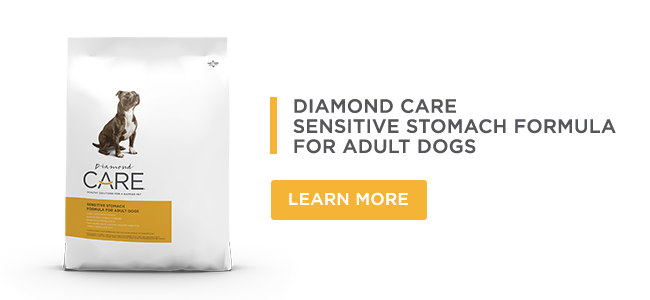Like dogs themselves, canine vomitus — the material that was vomited up (aka puke, barf or vomit) — comes in all colors, sizes (that is, amounts or volumes), smells and consistencies. And as gross as it may sound, those details can provide important clues about the cause and severity of your dog’s vomiting.
Did your dog really vomit?
Vomiting isn’t always what it appears to be. It’s not uncommon for dog parents to mistake regurgitation or expectoration for vomiting.
The vomiting act typically occurs in three stages: nausea, retching (aka dry heaves) and, finally, vomiting (aka emesis or vomition in medical-speak). Common signs of nausea in dogs are drooling, lip-licking and excessive swallowing. Retching is associated with sporadic respiratory and abdominal movements that create the necessary conditions for the final stage. During the act itself, contents from the stomach and often the first part of the small intestine are propelled into and out of the mouth by obvious contractions of the abdomen.
Regurgitation, on the other hand, is passive elimination of material from the esophagus without nausea or retching. Food that’s regurgitated is usually identifiable as undigested food and is often covered with slimy mucus. Dogs that drink too much water or eat too much food too fast may also regurgitate (and then proceed to eat that food).
Expectoration is different from vomiting and regurgitation and involves coughing up material such as mucus or phlegm from the lungs. However, dogs with a hacking cough may also retch and vomit at the end of an episode of particularly forceful coughing. Either of these events can occur during respiratory diseases such as kennel cough.
So your dog vomited. What does it look like?
Before cleaning up your dog’s vomit, calling your veterinarian or taking your dog to the clinic, you’ll find it worthwhile to poke through the vomit to see if you can identify any of the material in it. Yes, it may seem gross, but you’ll be glad you did when the veterinarian asks you to describe the vomitus. Here are some details to note:
Foreign material: Sometimes, the cause of your dog’s vomiting will be obvious. Bones, sticks, grass, toys, clothing (such as socks, underwear or gloves), laundry dryer sheets or garbage (like candy wrappers or paper towels) can be seen in vomited material when a dog is an indiscriminate eater. The vomit may have a sour, earthy, chocolatey or somewhat pleasant smell depending on what was eaten.
Consistency: Vomit can be chunky, granular, foamy, slimy or liquid. Chunky and granular vomitus are often (but not always) related to food, treats or even something else your dog ate that doesn’t agree with his or her stomach. Identifiable pieces of food in chunky vomit suggests the food wasn’t in the stomach very long before being thrown up. In contrast, granular vomitus suggests some digestion has occurred and the food stayed in the stomach awhile. Granular material that looks like coffee grounds, however, is partially digested blood and indicates potential bleeding in the stomach.
Clear, slimy or foamy vomit that’s tinged with yellow indicates your dog’s stomach was empty at the time vomiting occurred (the foam comes from mucus that’s normally present in the stomach plus saliva, while the yellow is bile from the small intestine). The underlying cause could be a rather harmless condition that may require a change in feeding practices or a more serious health issue such as kidney or liver disease. Either way, you’ll want to have your dog evaluated by a veterinarian to determine why your dog vomited.
Color: Even chunky and granular vomit tends to contain a lot of fluid, which may be a range of colors from clear to yellow, green, brown or even red if bleeding is occurring in the stomach, esophagus or mouth. While bile often gives vomitus a yellow color, it can also add an orange or green tint to the vomited material. Vomit can also take on the color of dye or food coloring, depending on what was eaten. A bright green- or teal-colored vomit suggests your dog ate mouse or rat poison, and you should seek immediate medical advice from your veterinarian or animal poison control center.
Quantity: A dog who has gulped down a large bowl of water or dog food too quickly will regurgitate a large volume of material. But the dog who makes repeated attempts to vomit only to produce little (white foam) or no vomitus needs immediate veterinary attention. Small amounts of white foam or no vomit is one of the characteristic signs of a twisted stomach, known as GDV (gastric dilatation-volvulus), a life-threatening condition that requires immediate medical attention.
Things to consider when your dog vomits
Vomiting has a vital purpose in dogs, some of whom have a well-deserved reputation for eating just about anything. It’s one way the body corrects a mistake and protects itself. But sometimes vomiting is a sign of a serious health problem.
Diagnosis of the underlying cause of your dog’s vomiting typically begins with thorough history. In addition to material found in the vomit, you’ll want to provide your veterinarian with details such as:
- Frequency (number of times, number of days or weeks)
- Time of day
- Brand and type of normal food
- Time since last meal and/or treats
- Anything unusual that might have been eaten
- Changes in appetite
- Any other symptoms or changes in behavior that you’ve noticed
It’s normal and reasonable for most dogs to vomit a few times a year. But vomiting that’s unexplained or that increases in frequency is not. If you have any questions or concerns about your dog’s health, be sure to talk with your veterinarian.
RELATED POST: What Your Dog Wishes You Knew About the Canine Stomach








